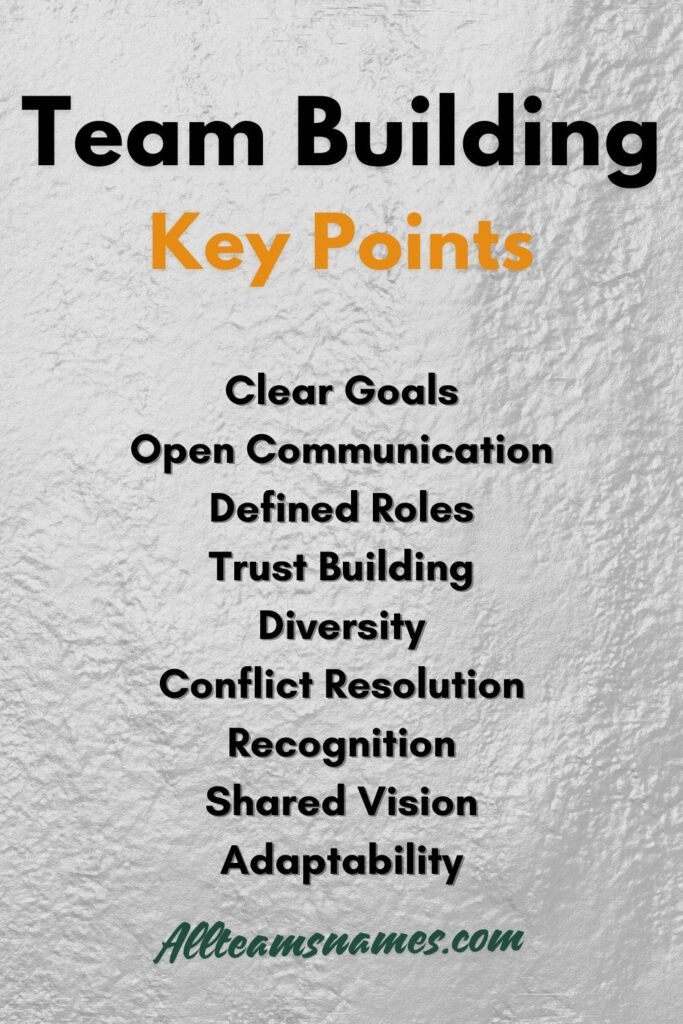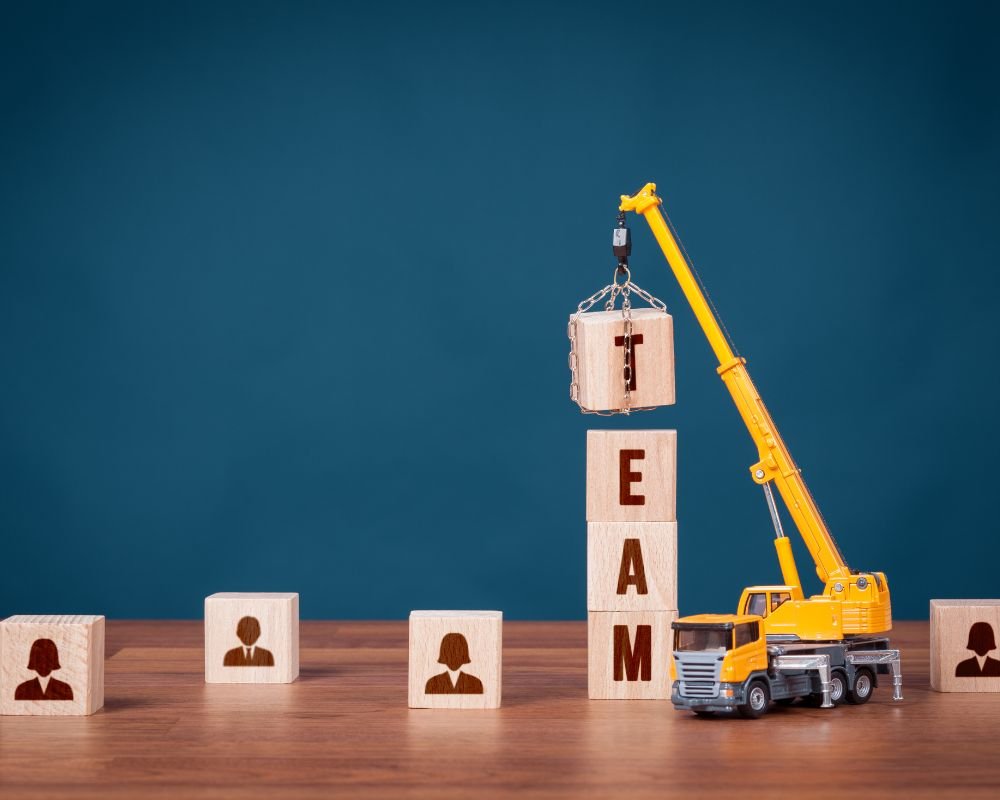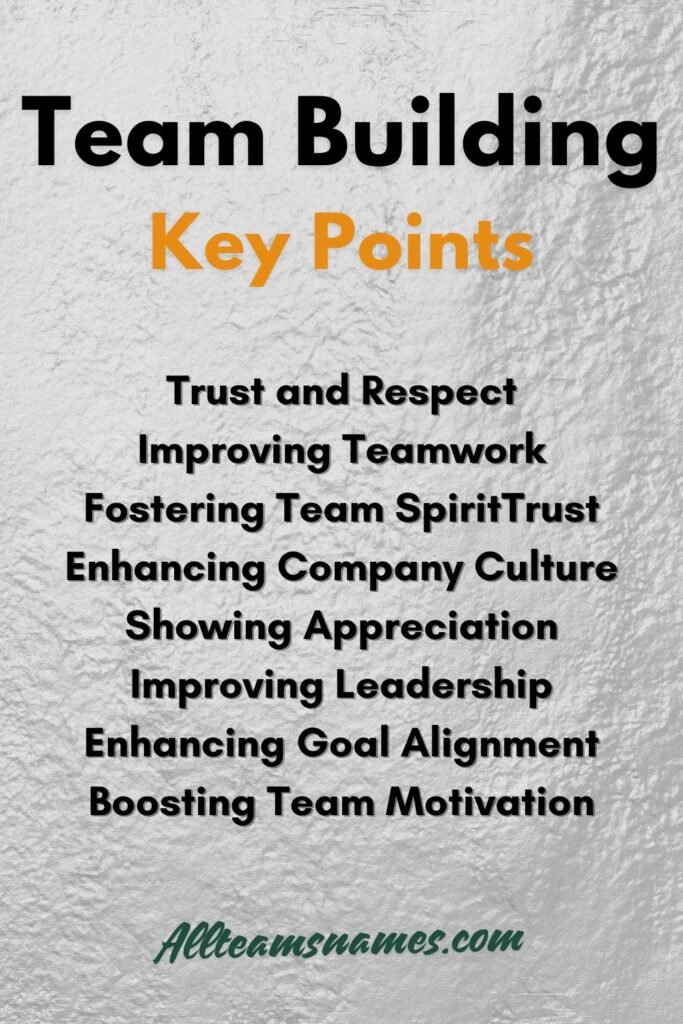Building a strong and effective team is a foundational element for any successful company. Yet, the task can often feel daunting for employers and HR specialists. How can you streamline the process of creating a motivated and cohesive team?
The Essence of Team Building
When you think of team building, you might recall long-winded games and workshops that seem to lead nowhere. However, true team building goes far beyond these superficial activities. It’s about creating an environment where people can come together to work towards a common goal. Communication, collaboration, problem-solving, and enjoyment are at the heart of meaningful team-building exercises.
Key Points of Effective Team Building

- Clear Goals: Establish clear and achievable goals for the team to aim for, ensuring every member understands the objectives.
- Open Communication: Encourage open lines of communication where team members feel comfortable expressing ideas and concerns.
- Defined Roles: Clearly define roles and responsibilities within the team to ensure efficiency and accountability.
- Trust Building: Foster an environment of trust where team members support and rely on each other.
- Diversity: Promote a diverse team composition to bring varied perspectives and solutions.
- Conflict Resolution: Implement strategies for resolving conflicts quickly and efficiently.
- Regular Feedback: Provide regular feedback to guide team members in their personal and professional growth.
- Recognition: Recognize and celebrate individual and team achievements to boost morale.
- Skill Development: Facilitate opportunities for skill development and learning within the team.
- Team Engagement: Actively engage team members in decision-making processes.
- Shared Vision: Instill a strong sense of shared vision and purpose within the team.
- Positive Environment: Create a positive and motivating team environment.
- Respectful Interactions: Encourage respectful interactions among team members to maintain harmony.
- Adaptability: Promote adaptability to ensure the team can pivot and address changes effectively.
- Regular Meetings: Schedule regular meetings to keep communication transparent and ongoing.
- Resource Availability: Ensure the team has access to the necessary resources to complete tasks.
- Innovative Thinking: Encourage innovative thinking and the exploration of new ideas.
- Team Building Activities: Plan regular team-building activities to strengthen bonds.
- Leadership Support: Provide active support from leadership to guide team efforts.
- Work-Life Balance: Encourage a healthy work-life balance to prevent burnout.
- Performance Metrics: Define clear metrics for assessing team and individual performance.
- Problem-Solving: Encourage problem-solving approaches that include input from all team members.
- Mentorship: Offer mentorship opportunities to foster growth and knowledge sharing.
- Goal Alignment: Align team goals with organizational objectives for cohesion.
- Empowerment: Empower team members by delegating authority and responsibility.
- Cultural Sensitivity: Be culturally sensitive and inclusive in team interactions.
- Resourcefulness: Develop a resourceful team capable of overcoming obstacles independently.
- Creative Outlets: Provide creative outlets to foster innovation and relieve stress.
- Conflict Prevention: Implement measures to prevent conflicts before they arise.
- Transparency: Maintain transparency in processes and decisions affecting the team.
- Customer Focus: Orient team goals towards customer satisfaction and needs.
- Stress Management: Introduce stress management techniques to maintain mental health.
- Team Roles Rotation: Rotate roles to broaden skills and prevent monotony.
- Celebrate Milestones: Celebrate team milestones to reinforce achievements and progress.
- Strong Leadership: Ensure the presence of strong leadership to steer the team forward.
- Feedback Culture: Create a feedback culture that values constructive criticism.
- Team Autonomy: Allow teams a degree of autonomy to encourage ownership.
- Problem Accountability: Encourage teams to take accountability for solving problems.
- Goal Re-evaluation: Regularly re-evaluate team goals to ensure they remain relevant.
- Cross-team Coordination: Promote coordination with other teams to achieve broader goals.
- Reflective Practices: Encourage reflective practices to learn from past experiences.
- Decision-Making Skills: Develop decision-making skills across the team.
- Motivation Boosters: Identify and use motivators specific to your team.
- Psychological Safety: Create a psychologically safe space for honest interactions.
- Team Purpose: Clearly define and communicate the team’s purpose to all members.
- Time Management: Encourage effective time management practices among team members.
- Regular Training: Conduct regular training sessions to keep skills updated.
- Inclusivity: Ensure inclusivity in all team discussions and decisions.
- Feedback Loops: Establish feedback loops for continuous improvement.
- Success Recognition: Develop a structured process for recognizing and rewarding success.
Defining Team Building

In essence, team building activities aim to unify a group—whether they are colleagues, students, or project team members—to work better together and achieve shared objectives. By engaging in these activities, team members learn about each other’s skills and roles within the group, fostering communication, respect, and trust. This leads to stronger bonds and a more cohesive, enjoyable working environment.
Team Building vs. Team Bonding
Often used interchangeably, team building and team bonding serve different purposes. While both are essential, understanding their differences can help you choose the right activities for your team:
- Team Building: Focused on skill development and achieving specific goals.
- Team Bonding: Aimed at fostering interpersonal relationships and creating a pleasant work environment.
Why is Team Building Important?
Here are some key reasons why team building is crucial for any organization:
1. Trust and Respect
Trust and respect are the cornerstones of a successful team. Team building activities create opportunities for colleagues to earn each other’s trust and respect, thus fostering a positive work environment.
2. Getting to Know Each Other
Knowing and liking your colleagues can significantly enhance workplace happiness and collaboration. This is especially important for remote teams who may not interact daily. Regular team-building activities promote interaction and unity.
3. Improving Teamwork
Struggling with project collaboration? Targeted team-building activities can boost teamwork skills, helping colleagues understand each other’s strengths and weaknesses, which in turn enhances project outcomes.
4. Fostering Team Spirit
A strong team spirit is crucial for navigating the ups and downs of business. Quality time spent together, whether through workshops or fun activities, can significantly boost team morale.
5. Encouraging Innovation and Creativity
A supportive work environment is essential for fostering creativity. Team-building events can provide a space for brainstorming and innovation, leading to greater business success.
6. Enhancing Company Culture
A strong company culture attracts and retains top talent. Regular team-building activities help reinforce company values, making them clear and visible to all employees.
7. Showing Appreciation
Regular team-building events show employees that their hard work is valued, providing them with something to look forward to and boosting morale.
8. Improving Leadership
Team-building activities are also beneficial for developing leadership skills, both for existing managers and potential future leaders within the team.
9. Changing Group Dynamics
Team-building activities can break down hierarchical barriers and improve group dynamics, making the workplace more enjoyable and efficient.
10. Enhancing Goal Alignment
Team-building exercises can help align team members with the organization’s overall goals, ensuring everyone is working in harmony toward the same objectives.
11. Reducing Employee Turnover
Engaging in team-building activities improves satisfaction and retention rates, reducing the costs associated with high employee turnover.
12. Boosting Team Motivation
Well-organized team-building activities can boost team motivation by creating a sense of belonging and camaraderie among team members.
13. Encouraging Open Communication
Activities that promote open communication enhance understanding and trust, paving the way for effective collaboration and decision-making.
14. Facilitating Conflict Resolution
Team-building activities provide a structured way to address conflicts by encouraging open dialogue, which helps in understanding and resolving differences.
15. Strengthening Problem-Solving Abilities
Team-building exercises designed around problem-solving help teams improve their critical thinking and resourcefulness.
16. Building a Sense of Accountability
Through team-building, members learn the value of accountability, understanding how their actions contribute to group success or failure.
17. Developing Empathy and Understanding
Participating in team-building exercises can increase empathy and understanding amongst team members, fostering a supportive work environment.
18. Reinforcing Organizational Values
Team-building activities reinforce organizational values and ensure that all employees understand and embrace them.
19. Enhancing Adaptability and Resilience
Activities that present challenges can enhance a team’s adaptability and resilience, qualities critical for navigating change.
20. Increasing Job Satisfaction
Team-building increases job satisfaction by emphasizing teamwork, establishing a sense of achievement and pride in collaborative efforts.
21. Encouraging Inclusivity
By involving everyone in activities, team-building promotes inclusivity and strengthens the bonds between diverse team members.
22. Improving Cross-Department Collaboration
Team-building can break down silos and encourage better cross-department collaboration, enhancing overall organization efficiency.
23. Recognizing Hidden Talents
These exercises often reveal hidden talents and strengths, providing opportunities for employees to shine and contribute in new ways.
24. Enhancing Listening Skills
Team-building activities help to enhance listening skills, encouraging members to actively pay attention and value each other’s input.
25. Building Brand Ambassadors
Satisfied, engaged employees are more likely to become brand ambassadors who positively represent their company externally.
26. Stimulating Positive Emotional Connections
Sharing positive experiences through team-building helps stimulate emotional connections and foster a supportive team dynamic.
27. Reinforcing Psychological Safety
Creating shared experiences through team-building enhances feelings of safety and support, encouraging honest communication.
28. Identifying and Addressing Team Weaknesses
Targeted activities can help identify team weaknesses and address them through collaborative learning and practice.
29. Promoting Fun and Relaxation
While focused on collaboration and improvement, team-building activities should also aim to create a fun, relaxed atmosphere to relieve work pressure.
30. Cultivating Patience and Respect
Through collaborative efforts, team members learn patience and earn respect, leading to smoother interactions and cooperation.
31. Encouraging Experimentation
Team-building encourages experimentation and innovation, creating an environment where team members are not afraid to take risks and try new things.
32. Supporting Transition Management
During times of change, team-building activities support transition management by solidifying teams and reducing resistance.
33. Learning from Mistakes
These activities provide a safe environment where mistakes are seen as learning opportunities rather than failures.
34. Creating Lasting Bonds
Consistent participation in team-building results in lasting bonds that contribute to a stable and cohesive team environment.
35. Reinforcing Commitment to the Team
Participating in these activities reinforces members’ commitment to their team and organization by showing investment in their development.
36. Adapting to Remote Work Challenges
For remote teams, virtual team-building activities address unique challenges by fostering connectivity and engagement across distances.
37. Improving Interpersonal Skills
Activities designed to enhance communication and collaboration naturally foster improved interpersonal skills.
38. Providing Opportunities for Feedback
Team-building activities naturally lend themselves to opportunities for giving and receiving constructive feedback to improve performance.
39. Encouraging Time Management
Time-bound team activities reflect the importance of time management skills, positively influencing workplace efficiency.
40. Promoting Efficient Resource Utilization
Exercises that simulate real-world tasks promote efficient resource utilization, showcasing the benefits of teamwork for shared success.
41. Demonstrating the Benefits of Diverse Perspectives
Exposure to diverse perspectives during activities teaches teams the importance of inclusivity in fueling innovation.
42. Building Leadership from Within
Team-building contributes to leadership development by allowing all members to take on roles of responsibility and initiative.
43. Strengthening Collective Team Identity
Working towards common goals during activities fosters a strong collective team identity, enhancing loyalty and motivation.
44. Instilling a Sense of Ownership
Team-building imparts a sense of ownership among team members, promoting accountability and commitment to team achievements.
45. Facilitating Skill Sharing
Activities that require collaboration provide opportunities for skill sharing, enhancing team capabilities.
46. Encouraging Creativity
Creative challenges stimulate original thinking and innovation, providing a valuable skill set for problem-solving.
47. Enhancing Cognitive Flexibility
Dealing with unexpected challenges during team building improves cognitive flexibility, essential for adaptability and learning.
48. Developing Trust in Leadership
Team-building creates interactions between employees and leaders on equal footing, strengthening trust in leadership.
49. Engaging Introverted Team Members
Structured activities provide an ideal setting for engaging introverted members, ensuring all voices are heard.
50. Challenging Groupthink
Through diverse exercises, team-building activities challenge groupthink and encourage independent thinking.

Common Team Building Activities
Here are some popular activities that can help build stronger teams:
- Outdoor challenges
- Office escape rooms
- Workshops and seminars
- Volunteer work
- Creative brainstorming sessions
Conclusion
Investing in team-building activities is not just about having fun; it’s about creating a more effective, cohesive, and motivated team. If you’re ready to take your team to the next level, consider integrating regular team-building activities into your organizational routine.
Call to Action
To learn more about how you can implement effective team-building strategies, schedule a consultation with one of our experts today.
FAQs
Q: Is team building possible for remote teams?
Absolutely. Many team-building activities can be adapted for virtual environments.
Q: What is the difference between team building and team bonding?
Team building focuses on skill development and achieving goals, while team bonding emphasizes creating personal connections and improving the work environment.
Q: How often should we conduct team-building activities?
Regularly, but the frequency can depend on your team’s needs and resources.
Q: Are team-building activities expensive?
They can be, but there are many cost-effective options available that can yield significant benefits.
By understanding the importance and benefits of team building, you can create a more dynamic, innovative, and successful team. Ready to get started? Book a call with us today and transform your team into a powerhouse of productivity and creativity!



